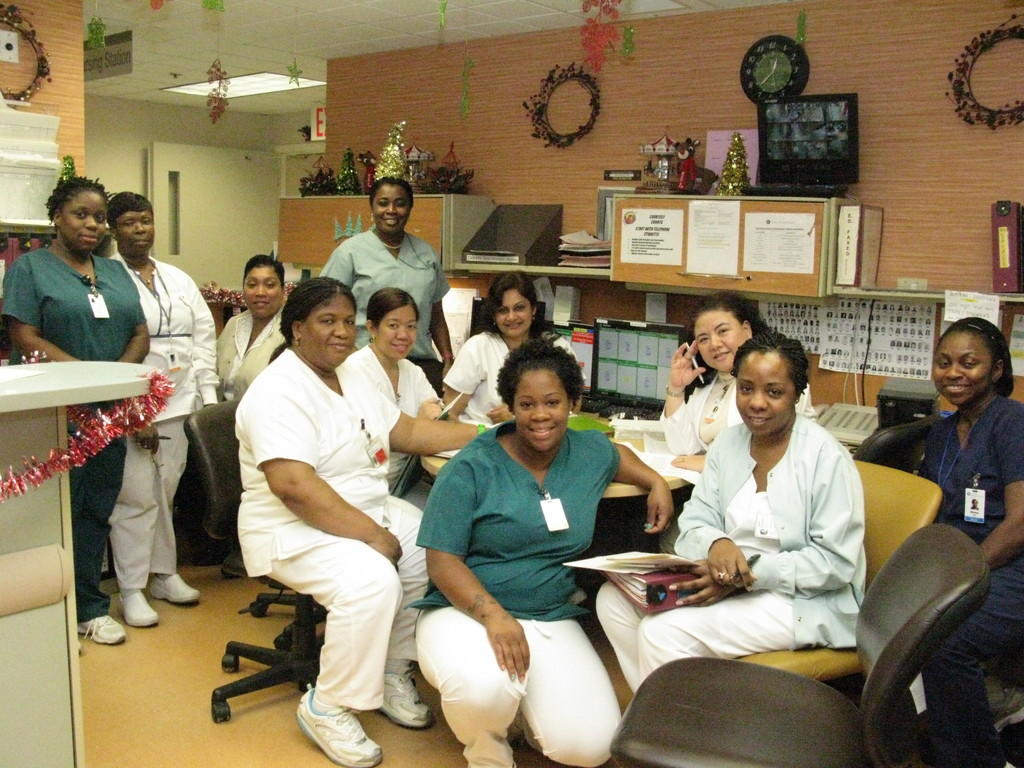St. John’s tries to meet demand
As patient volume increases, hospital seeks to expand
Since the closing of Peninsula Hospital Center in March, the nearly 107-year-old St. John’s Episcopal Hospital is now the only hospital on the Rockaway Peninsula, and it is doing its best to accommodate increased patient volume.
St. John’s has seen a 35 percent jump in patients using its emergency department services since Peninsula closed, according to hospital officials. There was an 11 percent increase — approximately 35 more patients per day — in patient volume in March and April compared with those same months last year.
Some 85 percent of the hospital’s 257 beds are currently occupied, and the number of X-rays the Imaging Department processes is up nearly 30 percent. Approximately 11,000 patients occupy St. John’s beds each year, and 123,000 use outpatient services annually.
In response to the expanded volume of the past few months, the hospital expedited its peer review credentialing process and hired six doctors who had worked at Peninsula. It is moving forward with expansion plans that were proposed last year when Peninsula first announced that it would close. It has also installed a state-of-the-art magnetic resonance imaging unit.
“We wanted to make sure that people in the community had the access to the services and doctors that they rely on,” said Nelson Toebbe, chief executive officer of St. John’s and CEO of Episcopal Health Services, which runs the hospital.
St. John’s serves Far Rockaway and the Five Towns, and has opened an off-site ambulatory care center in Lawrence, at 215 Rockaway Turnpike, which is served by doctors who practice at the hospital and live in the Five Towns.
St. John’s expects to expand in phases, Toebbe explained, and has received approval for the first phase from the state’s Department of Health. That phase will be an observation unit for emergency department treatment in which patients can be examined to determine what treatment they need. It is expected to reduce patient waiting time, Toebbe said.
Overall, the expansion plans include adding 17 emergency department treatment bays, 51 medical/surgical beds, 10 critical-care beds and one pediatric bed. Those 62 beds would increase the total at St. John’s to 319.
The hospital treats 30,000 emergency patients annually, and when the entire planned expansion is completed, it is expected that that number could increase to 50,000. However, the plan depends on funding, Toebbe said. That is expected to be raised through the hospital’s fundraising Development Board and grants.
The hospital’s Pulmonary Care Unit has received upgraded equipment, and its nurses were recognized by their peers as the best clinical unit in the hospital. “They are a very cohesive unit and work together as a team,” said Lin Zabula, a nurse with 23 years of experience who runs the unit.
Despite the expansion plan, the hiring of doctors and upgraded equipment, concerns remain that St. John’s will not be able to handle the volume that two hospitals once did. At a meeting in early May in Rockaway Beach about Peninsula’s closing, several people, including Dr. Wayne Dodakian, a former resident at PHC, said that St. John’s “is overloaded … patients in the hallways … it was not meant to handle both patient loads.” Dodakian filed legal action in an attempt to stop the closure of Peninsula, and a decision was still pending as of press time.
“It’s a sad state of affairs when the court values money over human life,” said Dodakian, referring to the decision by court-appointed Trustee Lori Lapin Jones to close Peninsula. The hospital had been ordered not to operate by the state since a February inspection of its laboratory found several violations.
Peninsula was attempting to emerge from bankruptcy when the lab problems surfaced. Through negotiations with creditors, the hospital was working on cutting $60 million in debt that it accumulated under former operator Medisys.
Acquired by Brooklyn-based Revival Health Care last September, the hospital appointed Todd Miller CEO, and he was working on reducing the debt, including halving the amount owed to the Local 1199 Fund from $20 million to $10 million. Local 1199 is the union for a majority of the employees who worked at Peninsula. But the lab violations prohibited the hospital from admitting new patients — and the revenue that generates — crippling its economic viability.
After listening to the complaints of medical professionals, elected officials and residents at the meeting, State Health Commissioner Nirav Shah concluded what most already knew, that the community has extreme health care needs.
“Our job is to figure out how best to meet these needs short-term and long-term,” Shah said. The state Department of Health is expected to issue a report within the next two months.

 39.0°,
Fair
39.0°,
Fair 




